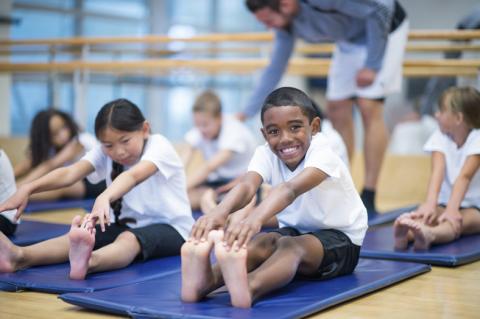Physical Activity: How Much

By encouraging your child to do some physical activity every day, you’re helping your child to be healthy and setting up healthy habits for life. Daily physical activity can be a lot of fun!
About physical activity for children
Physical activity is great fun, an important part of play and learning, and essential for healthy growth and development.
It’s also natural for children to move and be physically active.
Babies rock their bodies and kick their feet, and toddlers love to move around, dance, climb and jump. Many older children enjoy organized sports and playground games, and many children like a bit of rough-and-tumble play.
Canadian Physical Activity Guidelines
Canadian guidelines recommend that children aged:
- 0-1 years should be active several times throughout the day, such as floor play
- 1-4 years should be physically active for at least 180 minutes each day, with activity spread across the day
- 5-17 years should accumulate at least 60 minutes of moderate to vigorous physical activity each day. Moderate-intensity physical activity – should be able to walk and talk, but not sing all that well; would be about a 5 or 6 on a scale of 10. Vigorous-intensity physical activity – should not be able to carry on a conversation, should be huffing and puffing and breaking a sweat; would be about a 7 or 8 on a scale of 10.
Why physical activity is good for children
Physical activity is good for your child’s health – now and in the future.
Benefits of physical activity include:
- strong bones and muscles
- healthy heart, lungs and arteries
- improved coordination, balance, posture and flexibility
- maintaining a healthy weight
- reduced risk of chronic disease such as; heart disease, cancer and type-2 diabetes later in life
- improved learning and attention.
Physical activity is also great for helping your child to be happy and well in other areas of life.
For example, active children are more likely to:
- be confident and have enhanced self-esteem
- be happy and relaxed
- sleep well
- concentrate better at school
- get along with others and make friends easily
- share, take turns and cooperate
- feel like they belong.
Types of physical activity
Physical activity isn’t necessarily ‘exercise’.
Your child doesn’t have to play an organised sport or do push-ups to benefit. Opportunities for free outdoor play are just as important and valuable. It does help, though, if you make daily plans for when and where your child can be active.
Simple physical activities can include:
- going for walks or walking to child care or school
- spending time in places like playgrounds
- playing in parklands, shallow water at the beach or a river, near your home or at the homes of friends or family
- playing ‘tag’, ‘kick the can’, one-on-one soccer or basketball, in the backyard or park.
Getting your child moving is all about fun for the whole family. If you all enjoy physical activity together, it’s more likely to stay part of the family routine.
© Raising Children Network Limited, reproduced with permission.
Resources & Links:
Physical Activity for Children and Teenagers
Fitness: Getting and Staying Active
